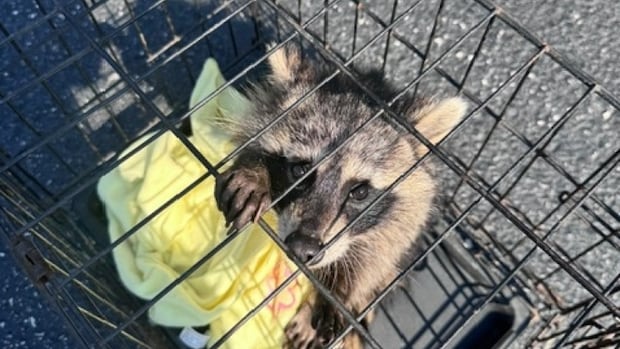There’s an entire cycle of life that helps some wildlife thrive when the boreal forest burns, but experts say climate change and human activity have led to larger, more intense wildfires, exacerbating the negative effects on some species.
While it’s too early to know exactly how one of the worst wildfire seasons in Saskatchewan history is affecting wildlife, research shows some species have evolved over millennia to take advantage of forest fire cycles.
“It’s almost essential, particularly in the boreal forest, to have some degree of fire on the landscape, because it is important to create that sort of regenerative habitat for species that depend on it,” said Jean-Michele DeVink, an environmental consultant and adjunct professor in the school of environment sustainability at the University of Saskatchewan.
“The challenge, of course, is that for other species that do require more mature forest, the extent of fires that we’re seeing throughout the boreal forest is a bit of a problem.”
Some birds find feasts in a forest fire’s aftermath. Certain types of beetles seek out fires because trees are more susceptible to infestation, and birds such as the black-backed woodpecker soon follow to feed on the larvae, DeVink said.
Some mammals benefit because “the influx of nutrients into the soil after a fire and the regeneration of grass and young vegetation creates a lot of forage and a lot of food for herbivores like rabbits and a lot of the ungulates: the deer, the moose and the elk,” DeVink said.
Large animals like bears and deer are usually able to flee active fires, but newborns are particularly vulnerable this year because of the unusually early wildfire season, said Iga Stasiak, a wildlife health specialist with the Ministry of Environment.
“At this time of year, many species are giving birth, so younger animals, nestling birds or animals that may be less mobile, may be unable to escape the fire,” Stasiak said.
That’s what worried Ovide Michel when he and a group of firefighters in Pelican Narrows found a moose calf wandering alone near a highway about two weeks ago.
“He was on the road for two days and I thought the mother would find it,” said Michel, the mayor of the Village of Pelican Narrows.
The group decided to rescue the calf, but realized they couldn’t keep it and released it back in the area. They continued watching over it, but after two days the calf was gone.
“I’m hoping the mother came back and found it,” Michel said.
It was a similar situation during the wildfire fight in the La Ronge area. Last week, Lac La Ronge Indian Band Chief Tammy Cook-Searson posted on social media that firefighters rescued a fawn that was wandering around a fireguard alone at night.
“The fawn was safely released to the wild, by conservation officers, in the vicinity it was rescued,” Cook-Searson said in the post.

The Ministry of Environment recommends people leaving young animals alone because it’s not always certain they were abandoned, Stasiak said, adding that moose and deer in particular leave their young hidden in brush or grass throughout the day to protect them from predators.
“People may feel those animals are orphaned, but usually the mother is nearby and they have the best chance of survival with the mother,” Stasiak said.
Both experts said more research is needed to understand the long-term effects of wildfire on the boreal forest and its inhabitants.
“Wildfire disturbance is a natural part of our ecosystem, but what we’re seeing is more intense fires, greater frequencies of fire and hotter drier weather,” Stasiak said.
“This is a relatively new area that we’re going to need to examine as the intensity and the frequency of these fires continues to increase with climate change.”
Up-to-date info on active fires, smoke and related topics is available at these sources:






